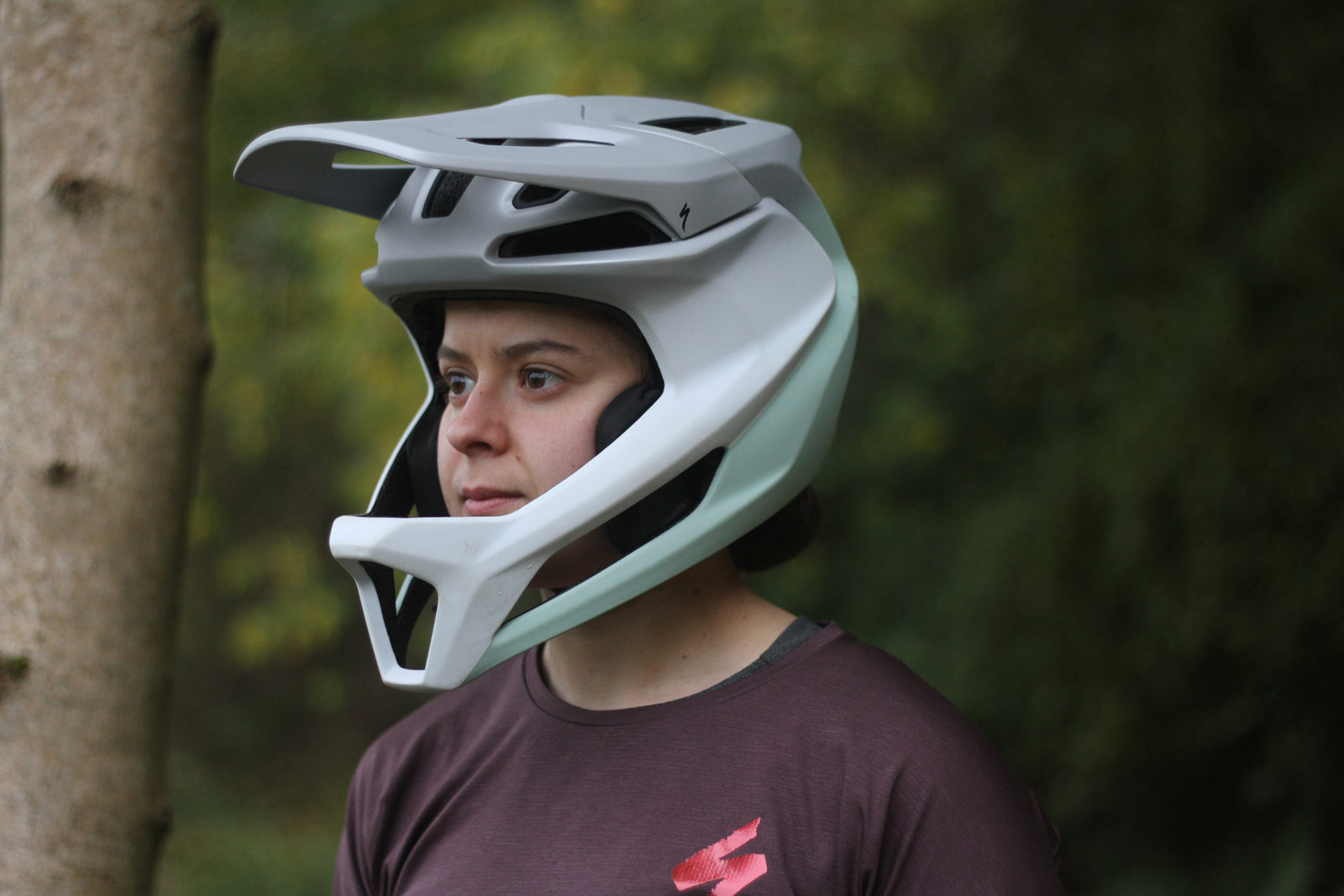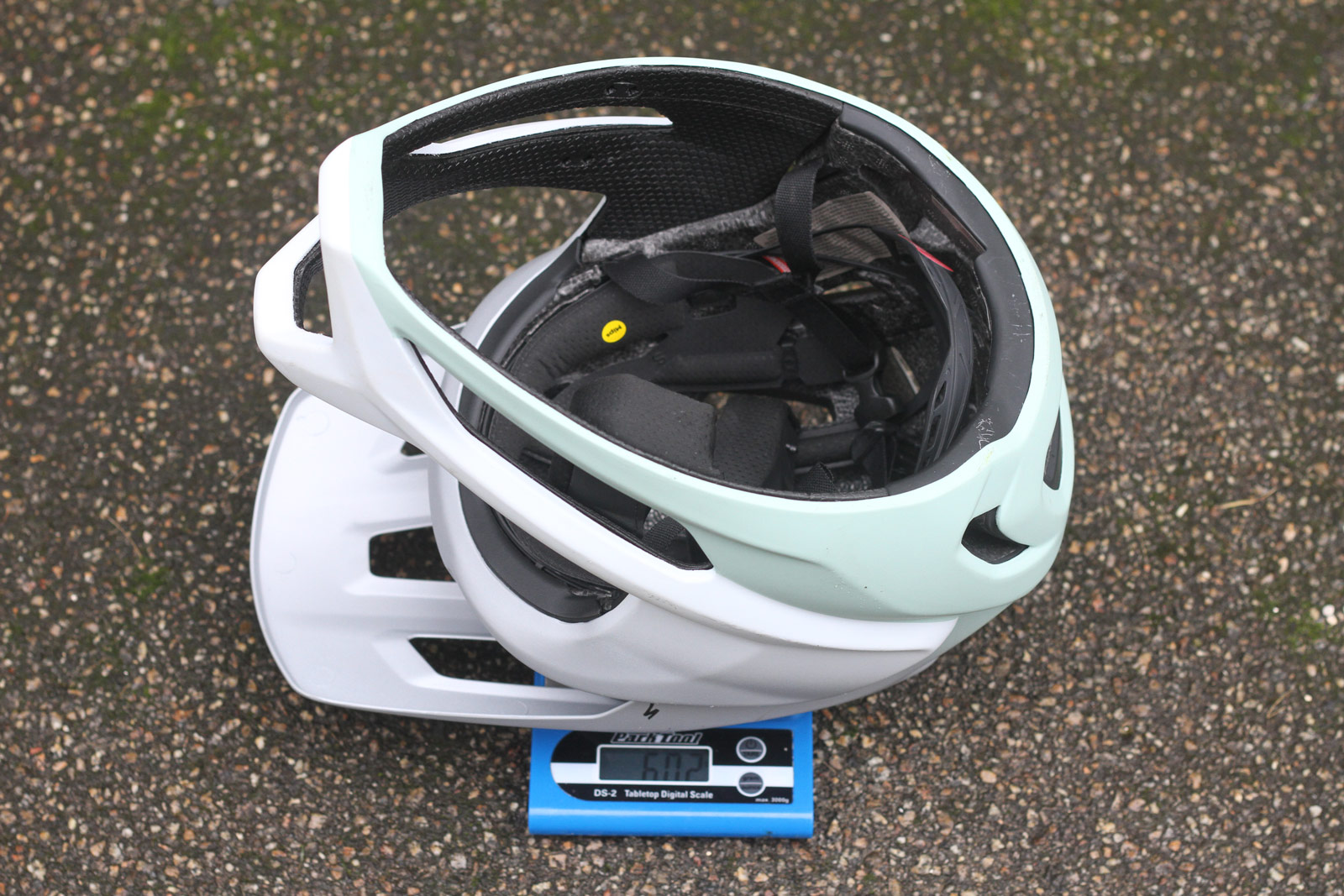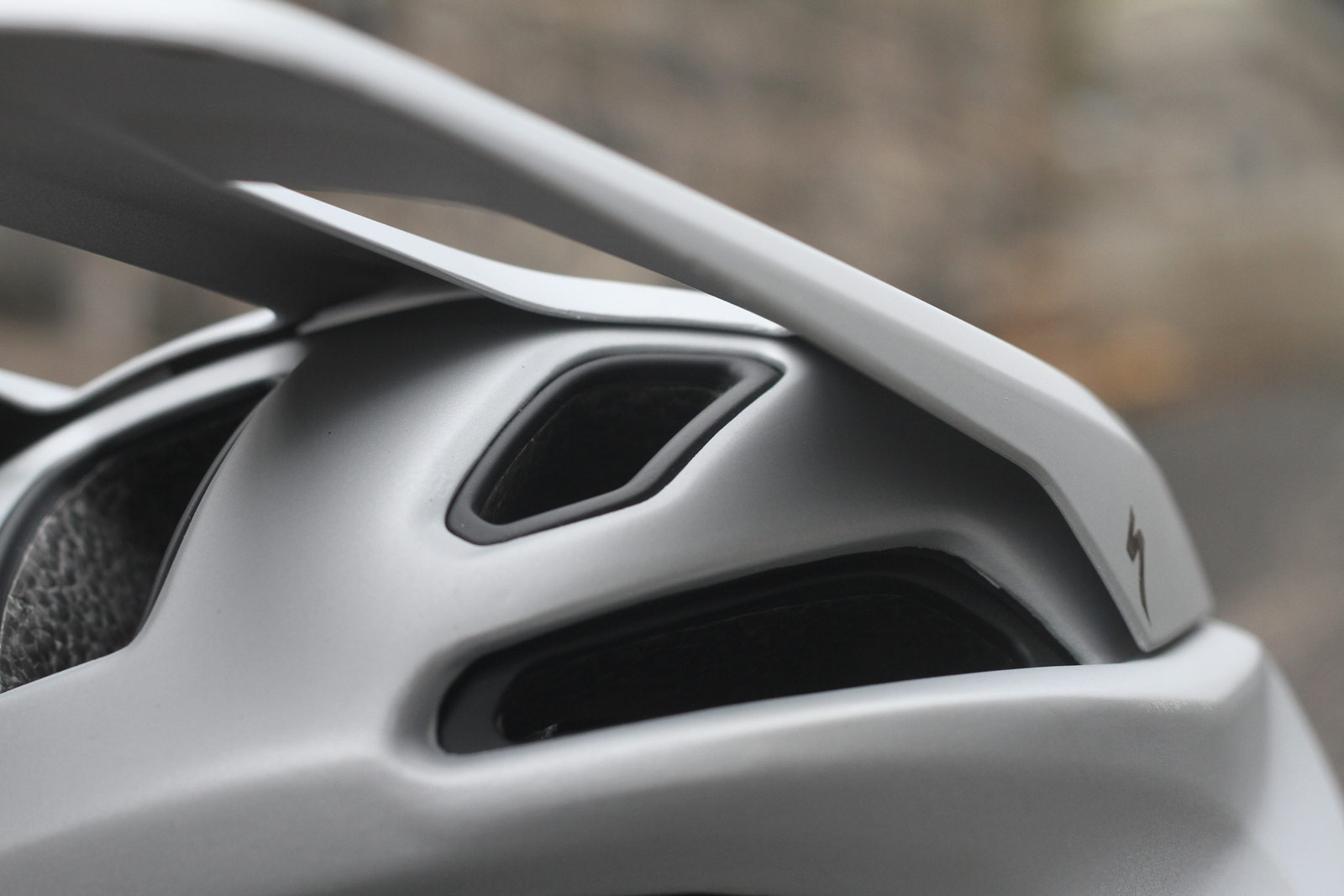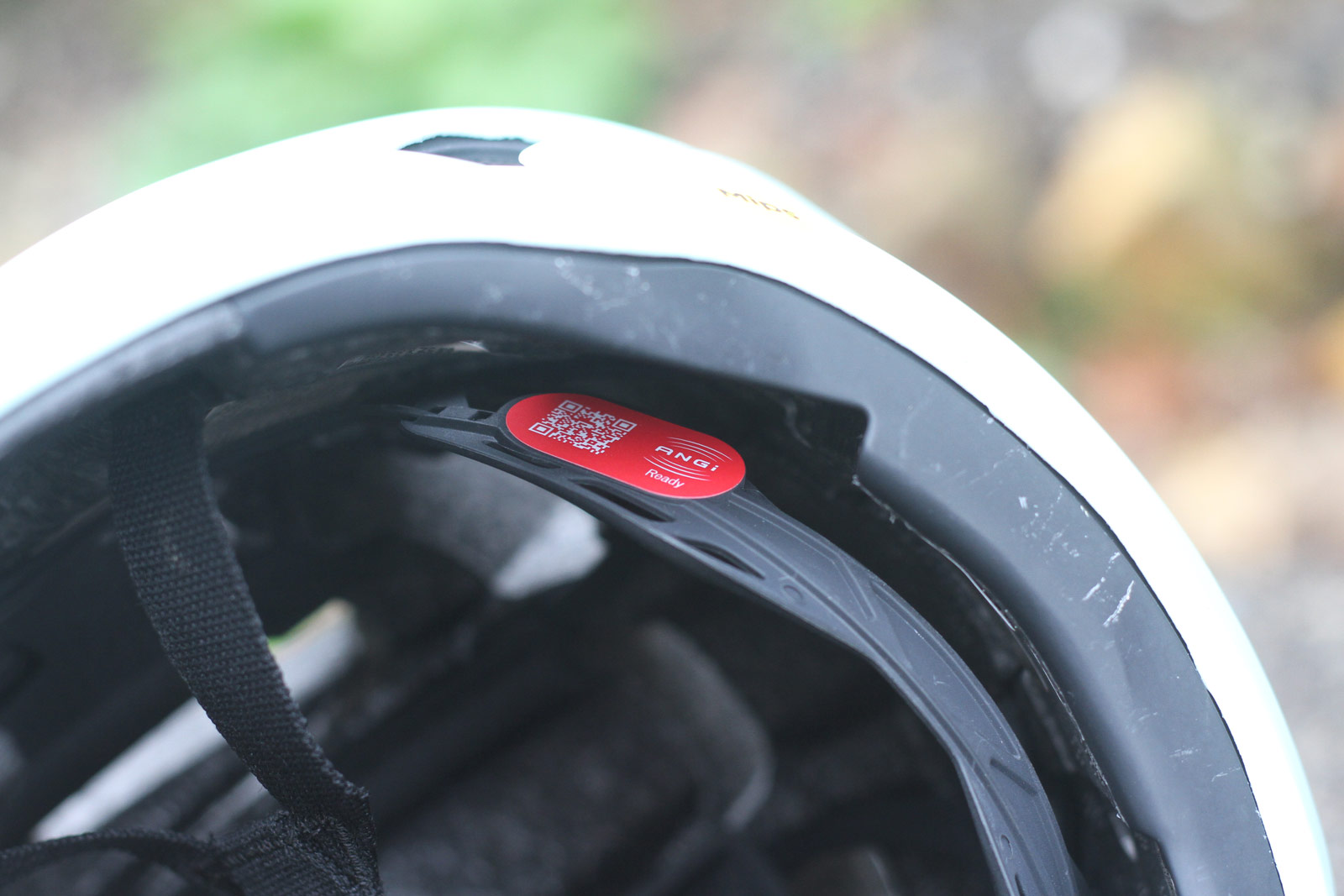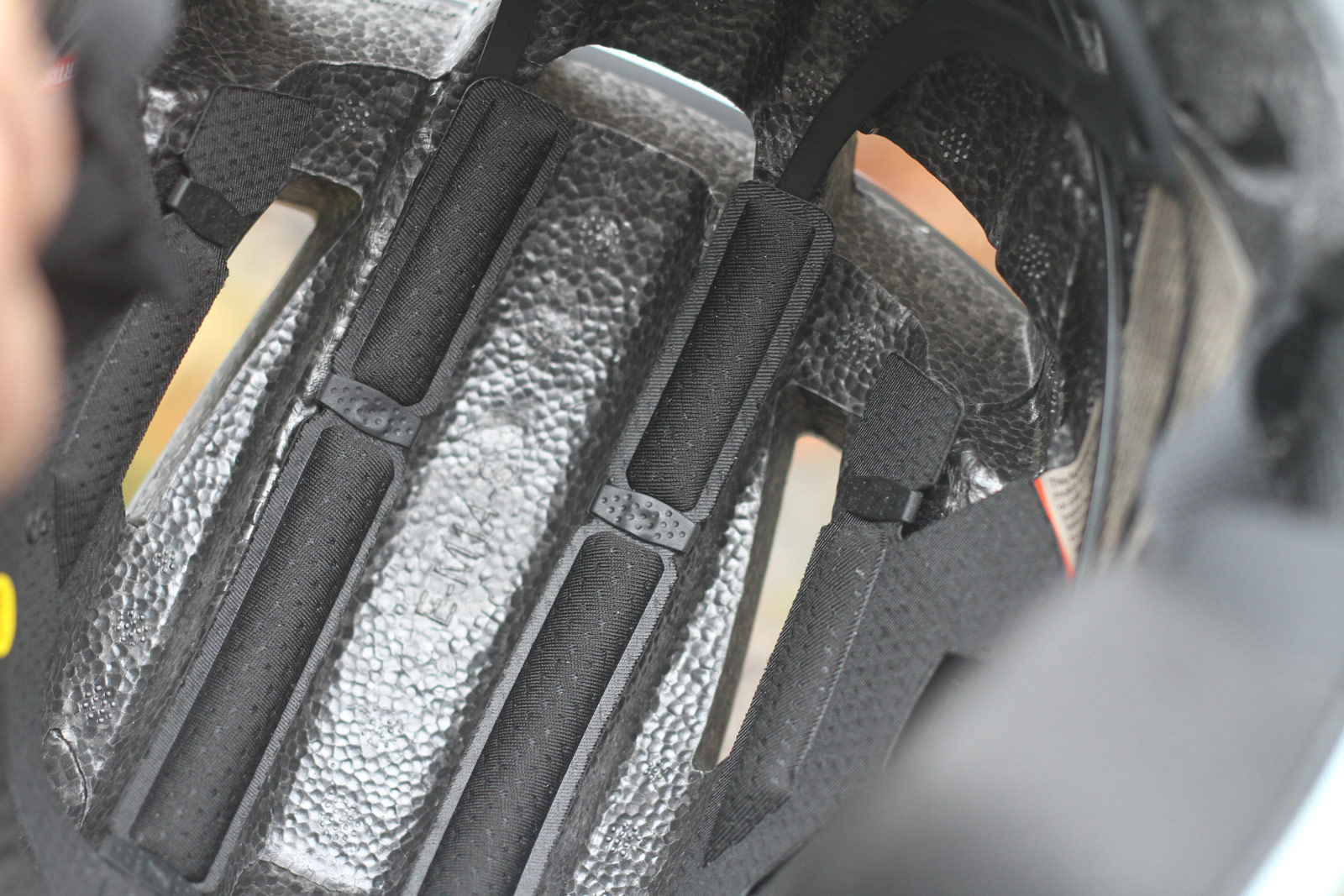The Gambit is Specialized’s first entry into the lightweight full face helmet market; the size small tested here weighed in at just 602g on our Park Tool scales. ASTM certified for downhill mountain biking, the Gambit gets a carbon shell packed with dual-density EPS, a MIPS SL anti-rotation liner and space for their ANGi crash sensor at the rear. Priced at $300 USD, you’d expect it to be packing that level of safety tech. Here’s how we got on with the Specialized Gambit.
Review: Specialized Gambit
At a claimed 640g in size medium, the Specialized Gambit isn’t anywhere near as lightweight as the current holder of the “World’s Lightest” accolade, the Dainese Linea 01, which weighs an incredible 576g (though it is much prettier). This is not a race to the bottom, however. Is it not possible that a helmet can be too light for its intended purpose? One for the Ask A Stupid Question series, perhaps.
We may wonder these things, but ASTM Certification, as well as independent helmet safety ratings agency, Virgina Tech, are there to put our mind at ease. Yes, this lightweight full face helmet is DH Certified to the ASTM F1952-15 Standard for Downhill Mountain Bicycle Racing.
So, what technology is responsible for keeping your head safe?
The shell is composed of a top polycarbonate layer with a carbon fibre layer sat underneath, visible at the vent openings, the rear, and the area just above the wearer’s forehead. Packed inside the outer shell are five unique pieces of energy-optimized dual-density EPS foam. Sat between the EPS and the comfort liner is a MIPS SL liner, there to deal with rotational impacts and thus reduce the possibility of rotational impact induced concussions.
At the rear, slightly offset to the right hand side, the Gambit has space for the fitment of Specialized’s proprietary ANGi sensor. So, if and when you do crash (and are incapacitated such that you can’t prevent the automatic countdown that begins on your smart phone) the Specialized Ride App transmits a text alert and your most recently uploaded GPS coordinates to your emergency contacts.
On top of weight, ventilation was a top priority for the Gambit. Eight front-facing vents give way to 10 exhaust vents at the rear. Internally, those vents translate into channels of airflow over the top of the head, extending right around to the back of the head to maximize the opportunity for heat and moisture to escape.
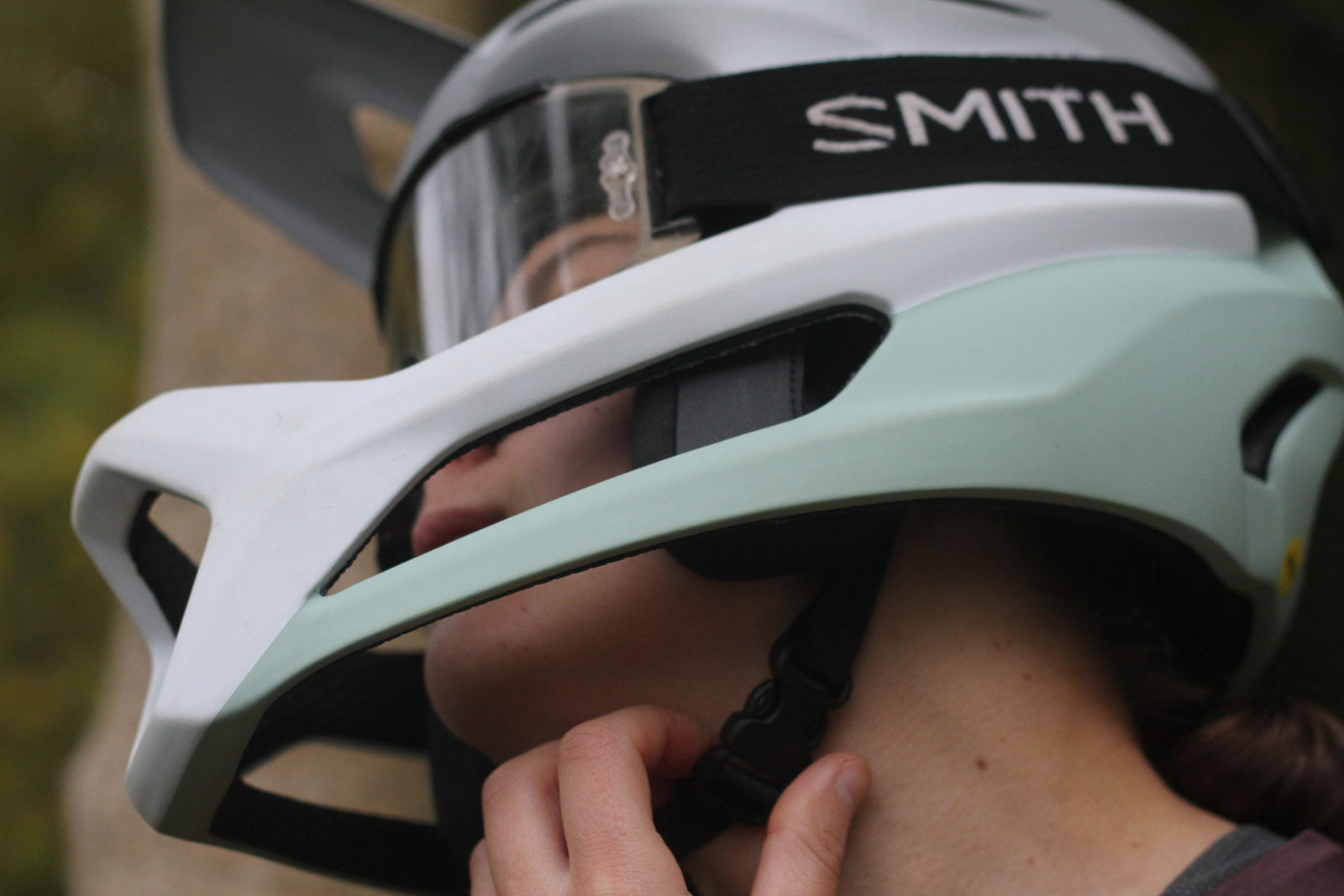
Tech covered, how does it fair out on the trail?
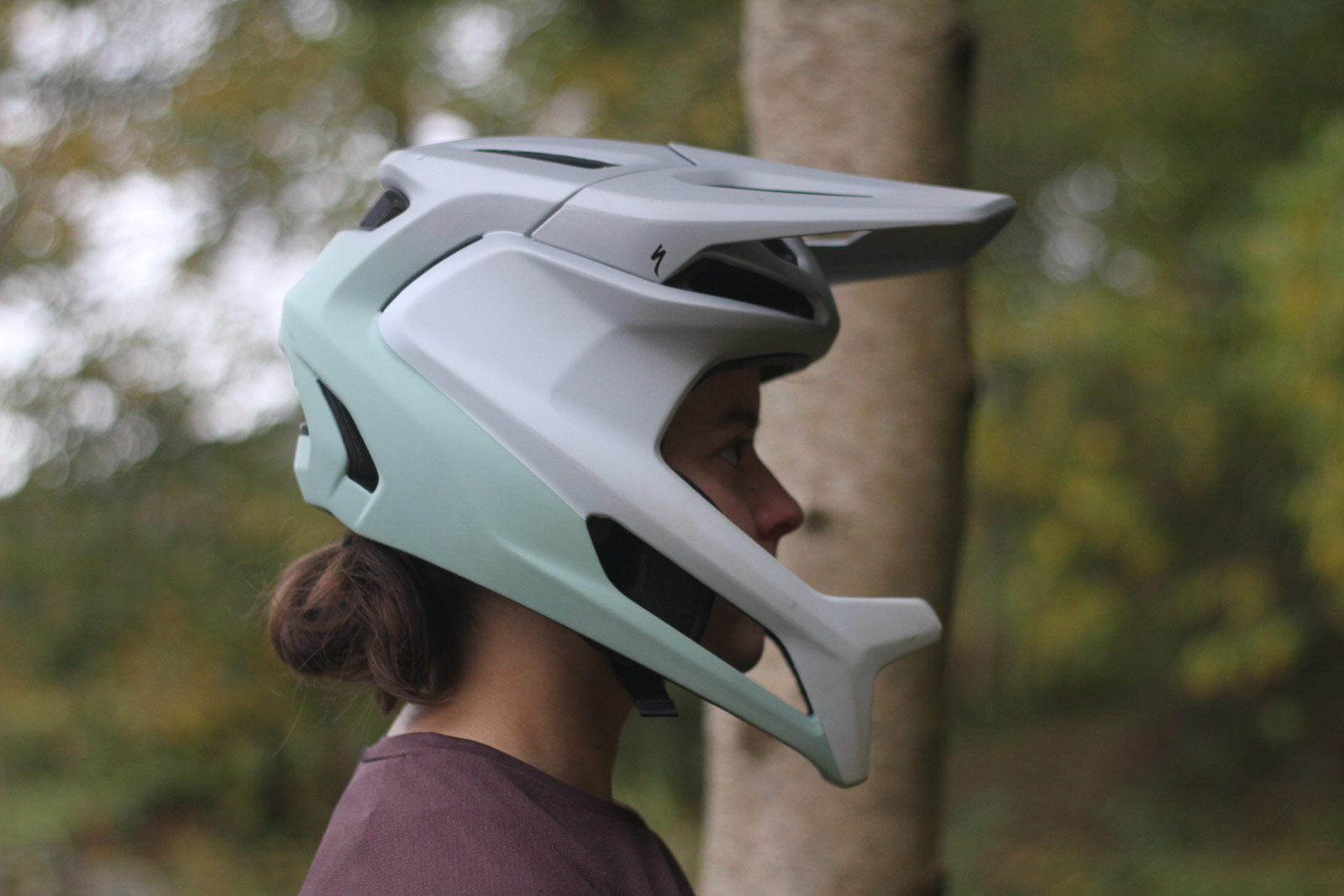
With a head circumference of around 54cm, I tested the small Specialized Gambit recommended for head circumferences of 51cm to 56cm. Dialing in fit was a quick and simple affair thanks to the SBC Integrated Fit system. What’s that? Just a fancy name for the retention system.
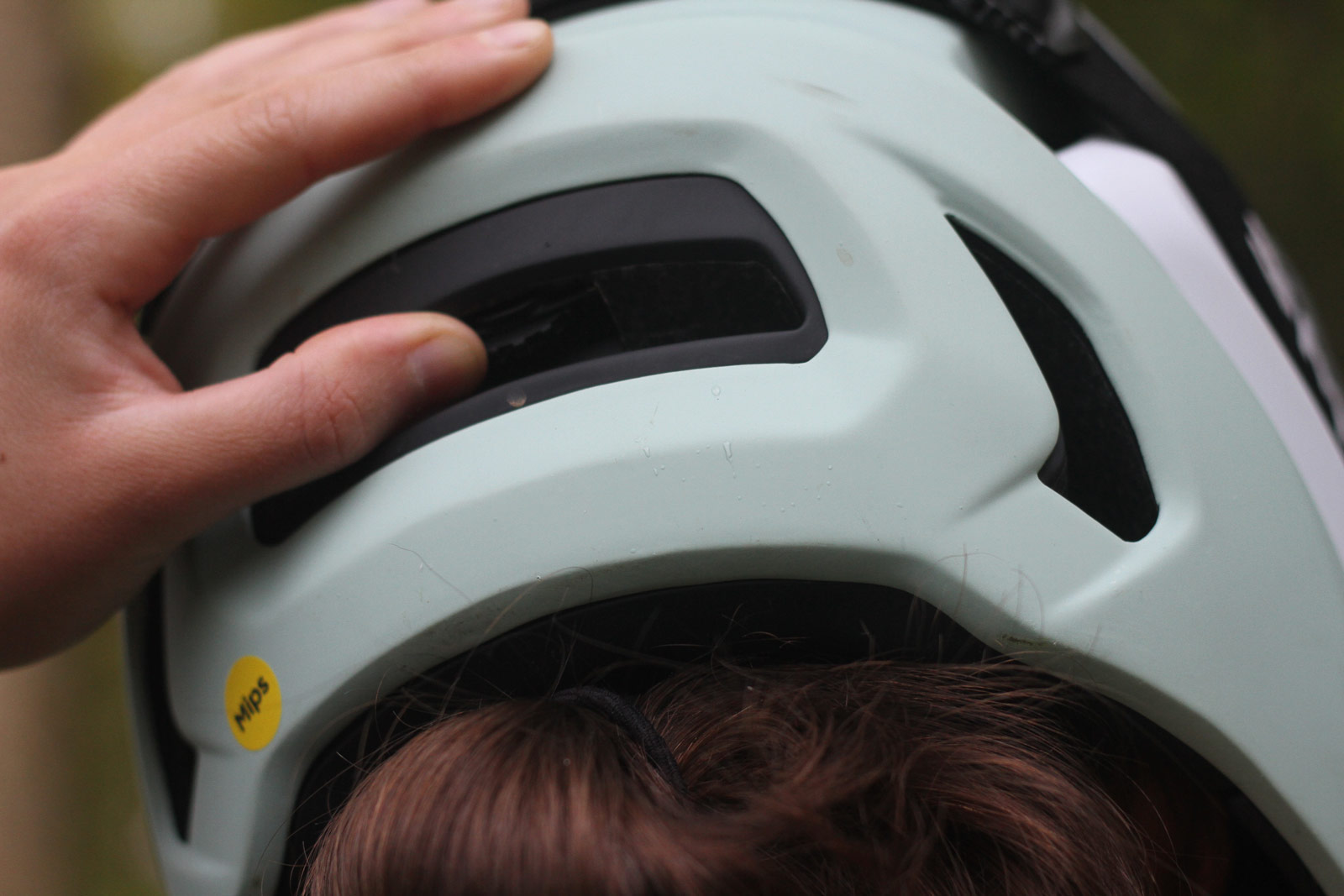
Like we saw on the Tactic 4 open face helmet that was recently updated, the dial for tightening the system is neatly integrated into the body of the helmet itself.
This loops 360° around the head; I found it tightened evenly. The system is also vertically adjustable, so the part that cups the occipital portion of your head can be raised or lowered over 5 increments. I used this to lower the retention system slightly to where it felt most secure.
I don’t really rate the Gambit’s comfort liner. Part way down, the soft foam of the comfort liner gives way to rubber loops, the function of which are to support a small velcro patch that secures the liner to the MIPS underneath. While wearing the helmet, I’m aware of these harder rubber portions at the top of my head; they don’t cause terrible discomfort, as there’s not a great deal of pressure in this area, but they do present a small distraction, nevertheless.
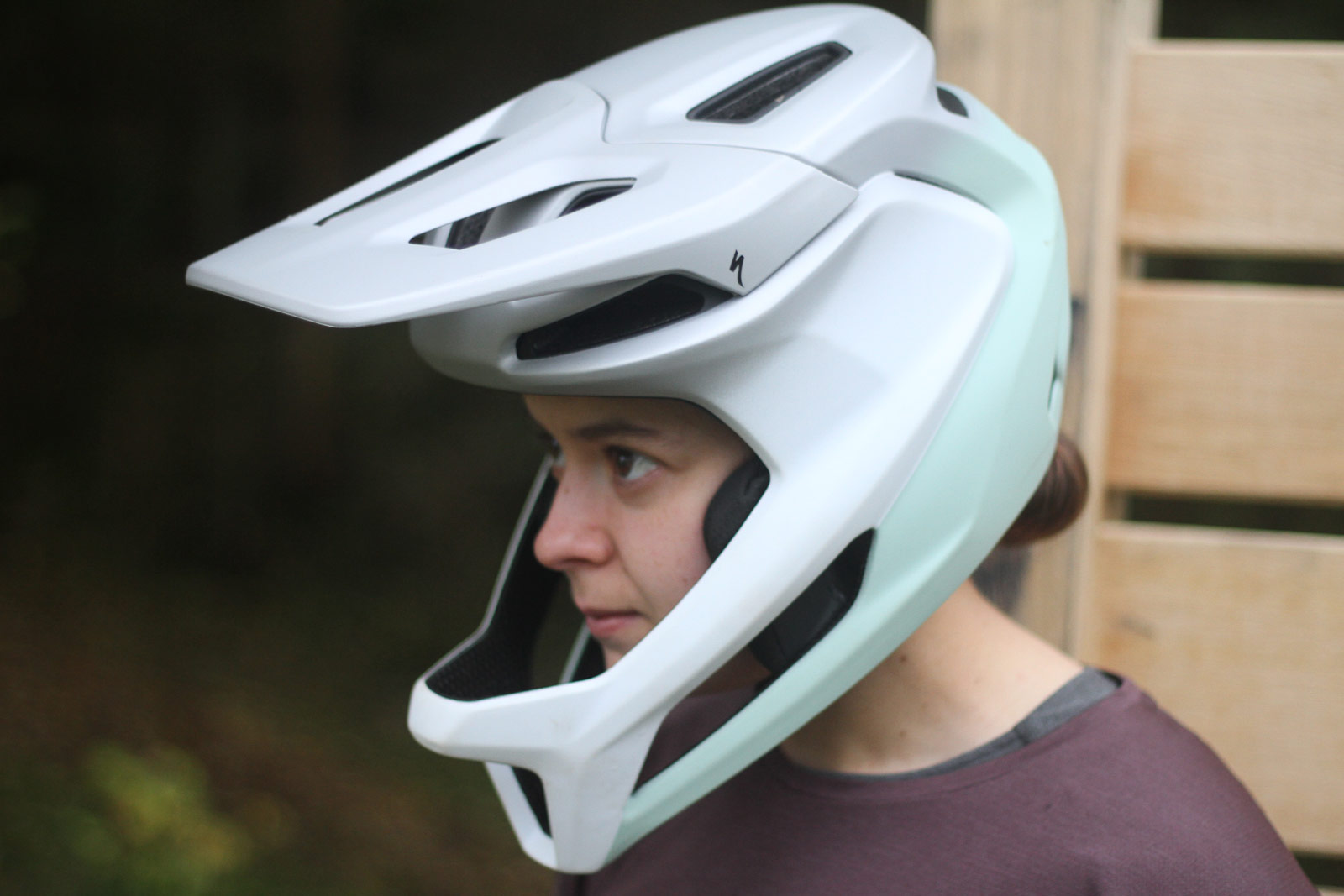
The cheek pads inside the Gambit helmet are fairly small; they are as tall as the chin bar but only extend rearwards by 5-6cm at most. This means they actually stay well clear of my ears, allowing me hear almost as well as if I were wearing a regular open face helmet.
The cheek pads can be removed for the purposes of washing but they’re really fiddly to pop back in. I found that, after being removed once, I could never quite get them back in very securely. They now pop back out very easily. After a day of shuttling, this became frustrating as one of the cheek pads had a tendency to pop out every time I put the helmet back on.
I did (accidentally) drop the Gambit from a height of around 2 feet onto the lino flooring of my van. Unfortunately, the visor took the hit and one side came free of its purchase on the main body of the lid. The ease with which the visor breaks away from the main body in the event of a crash is important to ensure it doesn’t contribute to any undesirable rotational forces the head might experience upon impact.
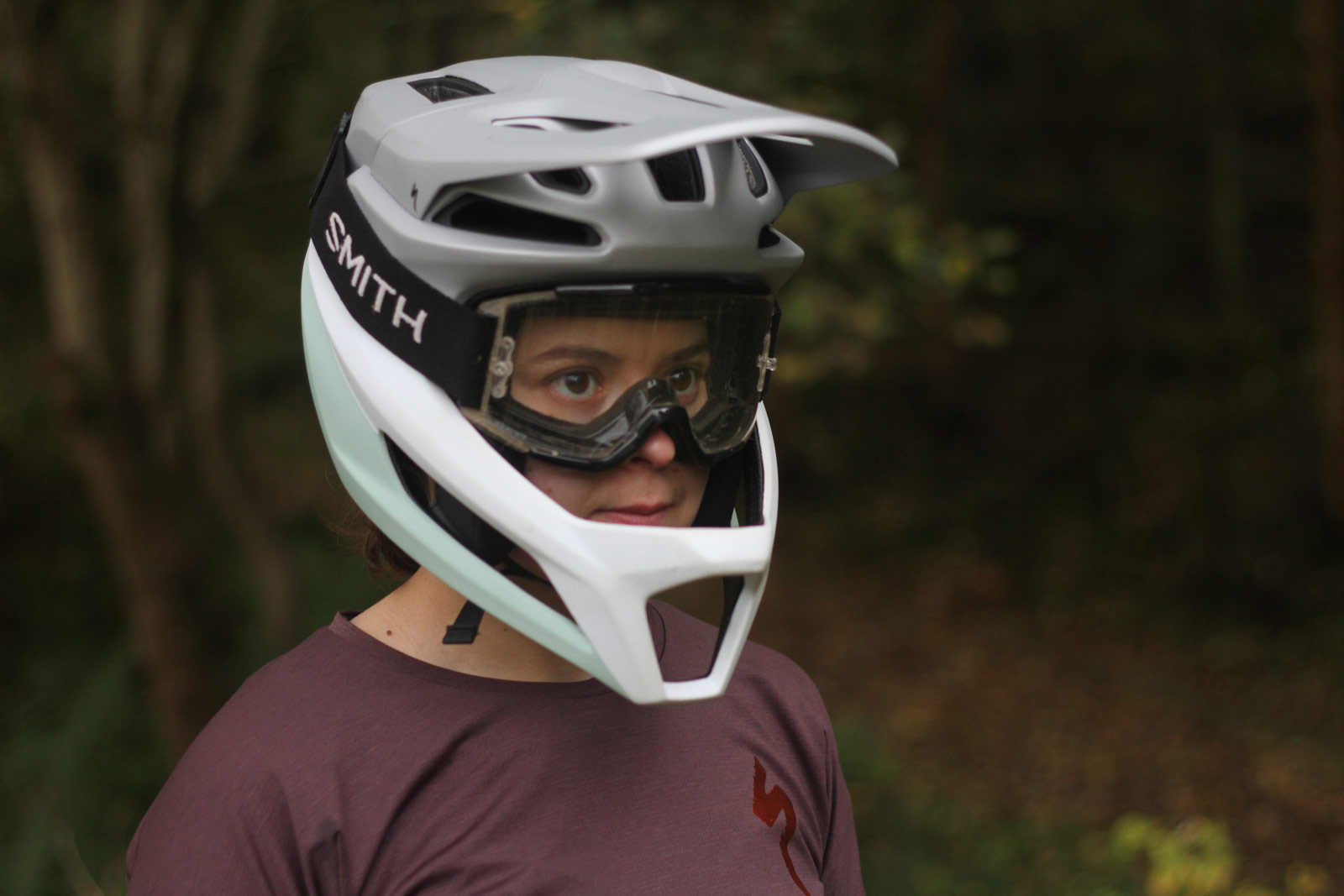
Overall, I rate the the Specialized Gambit as merely OK. While I applaud Specialized for creating a very lightweight, extremely well ventilated DH-certified full face helmet, I did find the quality in certain areas to be lacking; namely, the cheek pads and comfort liner. It’s certainly not as comfortable as other, heavier, full face helmets I’ve tested. Perhaps I’m being a little harsh, but at $300 USD I’d expect the quality to be a little higher.
Availability
The Specialized Gambit is available now from Specialized dealers worldwide in sizes S, M and L, retailing at $300 USD.
- Small : 51-56 cm, 602g (actual)
- Medium : 55-59 cm, 640g (claimed)
- Large : 58-62 cm, 730g (claimed)
Check out other colorway options on the Specialized website.
